General Assembly Candidates
County Clerk
Mercer County Board of Commissioners
Princeton Council
Princeton Public Schools Board of Education
November 4, 2025, is General Election Day. Unlike the Primary Election we detailed for you in May, the General Election ballot includes Unaffiliated candidates alongside those from the Democrat and Republican parties. Additionally, unaffiliated voters are eligible vote in this election.
This year, the biggest race will be to determine the next leader of the Garden State. While Governor is a major contest, they say it is the local government positions that have the most impact on residents’ day-to-day life. There are many races for you to weigh in on this year, including General Assembly, County Clerk, Board of County Commissioners, Princeton Council and Princeton Board of Education. We bring you details here on every candidate on the ballot, to help you vote informed. (You can find out about the gubernatorial candidates and their views on matters most impacting Mercer County in our companion article, Candidates for NJ Governor: Who Will Be Best for Mercer County?)
VOTING OPTIONS
 Are you inclined to Vote by Mail? If you are not already signed up to vote in that manner, and prefer to do so, you can fill out this form and return it in person, or mail it back to 209 S. Broad St., 2nd floor, PO Box 8068, Trenton NJ 08650. A ballot will then be mailed for you to fill out.
Are you inclined to Vote by Mail? If you are not already signed up to vote in that manner, and prefer to do so, you can fill out this form and return it in person, or mail it back to 209 S. Broad St., 2nd floor, PO Box 8068, Trenton NJ 08650. A ballot will then be mailed for you to fill out.
Once completed, Vote by Mail ballots must be placed in a secure drop box, postmarked or returned in person to the Board of Elections office by 8pm on November 4th. If being returned via drop box, in Princeton those can be found at the Municipal Building, 400 Witherspoon Street, as well as Princeton University Dinky Station/ Wawa, 152 Alexander Street. All other drop box locations can be found here. Note, the Hightstown drop box location has changed.
To ensure your vote was received, you can always track your ballot here.
VOTING DAYS AND TIMES
 If you prefer to vote in person, what are your options? This year, in-person early voting begins on Saturday, October 25, 2025, and is available through Sunday, November 2, 2025. Polls will be open Monday–Saturday from 10:00 a.m. to 8:00 p.m. and Sunday from 10:00 a.m.to 6:00 p.m.
If you prefer to vote in person, what are your options? This year, in-person early voting begins on Saturday, October 25, 2025, and is available through Sunday, November 2, 2025. Polls will be open Monday–Saturday from 10:00 a.m. to 8:00 p.m. and Sunday from 10:00 a.m.to 6:00 p.m.
You are eligible to vote at any early polling location, if one is more convenient to your work, daycare or family needs. Note, there is a new Early Voting location in West Windsor. The eight locations are:
Mercer County Library – Hickory Corner Branch, 138 Hickory Corner Road, East Windsor, NJ
Mercer County Office Park, 1440 Parkside Ave, Ewing, NJ 08638
Colonial Firehouse Company, 801 Kuser Road, Hamilton, NJ, 08619
Mercer County Library – Lawrence Headquarters Branch, 2751 Brunswick Pike (at Darrah Lane), Lawrence, NJ
Pennington Fire Company, 120 Broemel Place, Pennington, NJ
Princeton Municipal Building – Community Room, 400 Witherspoon Street, Princeton, NJ
Trenton Firehouse Headquarters, 244 Perry Street, Trenton, NJ
NEW! Mercer County Library -West Windsor Branch, 333 N Post Road, West Windsor, NJ
You can also choose to vote in person on Election Day, November 4th, with polls open 6am to 8pm. You have one specific polling location for election day, which is detailed on the front of the sample ballot which should have been recently mailed to your home. You can also click here to find it now.
WHO IS ON THE BALLOT?
As it is every two years, the 80-member New Jersey Assembly is up for grabs this November. For 16th Legislative District (LD16) voters in Mercer County (Princeton voters), there are two incumbents and two challengers running. Voters will choose two, to serve a two-year term.
 Roy Freiman (D) is running for his fifth term as LD16 Assemblyman, bringing with him previous experience as an executive at Prudential Financial. He has been proud to represent Princeton, a town where he says a richness of “history, education, innovation, and vibe help to create its unique charm and challenges.”
Roy Freiman (D) is running for his fifth term as LD16 Assemblyman, bringing with him previous experience as an executive at Prudential Financial. He has been proud to represent Princeton, a town where he says a richness of “history, education, innovation, and vibe help to create its unique charm and challenges.”
Freiman says he understands Princeton’s focus on affordability, which he will stay involved with if elected to another term.
“Princeton understands the importance of having a community that is open to all. That’s why I’ve worked to protect school funding, provide real property tax relief to seniors, homeowners, and renters through programs like Anchor and StayNJ, and strengthen government support for seniors and working families. My focus, along with my running mate, Assemblywoman Mitchelle Drulis, is to make sure Princeton remains a place where people are able to live, work, raise their families, and enjoy the beauty that is Central Jersey.”
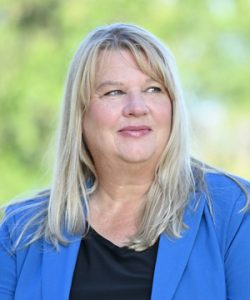 Mitchelle Drulis (D) is running for her second term in the Assembly. She brings with her more than two decades of experience working on campaigns and alongside elected political leaders. Keeping Princeton, and New Jersey, affordable, livable and strong are key issues for her going forward.
Mitchelle Drulis (D) is running for her second term in the Assembly. She brings with her more than two decades of experience working on campaigns and alongside elected political leaders. Keeping Princeton, and New Jersey, affordable, livable and strong are key issues for her going forward.
“Affordability isn’t just a talking point. Whether it is property taxes, healthcare costs, or the cost of a night out with your family, it is something Mercer County families, even in Princeton, are feeling every day. Federal funding cuts to essential programs have only made things harder, forcing local governments and non-profits to stretch thinner to meet the growing needs.”
Drulis says she’s worked hard with her counterparts, Assemblyman Freiman and Senator Zwicker, to bring money into the district – citing over $1.3 million to Princeton alone.
“This funding goes directly into projects that matter including improvements to Princeton’s sewer system to ensure that core infrastructure keeps pace with the community, protecting our historic sites such as the Princeton Battlefield, and cultural resources like McCarter Theater, and supporting Princeton Food Pantry which is seeing an increase in demand. And of course, making sure that programs like Stay NJ, Anchor and Senior Freeze which provide property tax relief for seniors, homeowners and renters are funded and can continue.”
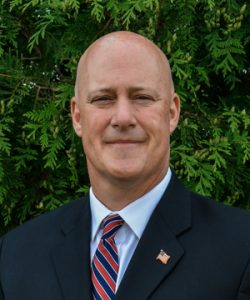 Scott Sipos (R) is running for his first term in the Assembly. He is currently in his second term on the Raritan Township Committee, having served as its mayor in 2024. Sipos is a teacher, who led many negotiations as its union’s president, and strong schools are a top issue of his campaign.
Scott Sipos (R) is running for his first term in the Assembly. He is currently in his second term on the Raritan Township Committee, having served as its mayor in 2024. Sipos is a teacher, who led many negotiations as its union’s president, and strong schools are a top issue of his campaign.
“The most urgent issue facing Mercer County residents is the ongoing school funding crisis, and its deep impact on affordability, local property taxes, and the quality of public education. As a father and educator, I’ve seen firsthand how the flawed school funding formula has stripped millions of dollars from our local schools in LD16, forcing painful cuts to teachers, programs, and services that our children rely on. This isn’t just a school issue; it’s a community issue. When the state pulls funding, the burden shifts to local property taxpayers. That’s unacceptable, especially at a time when families are already struggling with high costs of living.”
Sipos intends to counter what has taken place while the current Assembly people have been in office.
“They have failed to take meaningful action. They’ve watched as schools in our district suffered, offering short-term patches instead of real, long-term solutions. We can’t keep kicking the can down the road while our schools and taxpayers pay the price. In Trenton, I will fight to overhaul the broken funding formula and ensure that every student in LD16 gets their fair share. Our kids deserve better. Our communities deserve better. And it’s time for real leadership to deliver it,” Sipos states.
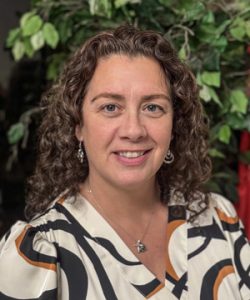 Catherine Payne (R) is running for her first term in the Assembly, currently serving as Deputy Mayor of Hillsborough. She is also an IT/Operations professional who has worked to modernize and make systems more efficient in both the public and private sectors. She is eager to find better ways to fund New Jersey’s schools.
Catherine Payne (R) is running for her first term in the Assembly, currently serving as Deputy Mayor of Hillsborough. She is also an IT/Operations professional who has worked to modernize and make systems more efficient in both the public and private sectors. She is eager to find better ways to fund New Jersey’s schools.
“The most urgent issue for Mercer County and LD16 right now is fixing the broken school funding formula, which has slashed millions from our local school budgets and placed an unfair burden on homeowners through rising property taxes. This funding crisis is not only hurting our students, it is threatening the affordability of our entire region. I’ve spoken with families, teachers, and school officials across LD16 who are frustrated and overwhelmed. They’ve seen programs cut, staff laid off, and class sizes grow, all while property taxes continue to rise. It’s clear the current funding model is not working for our community.”
Payne says efforts made thus far have not been good enough.
“Roy Freiman and Mitchelle Drulis have done nothing to deliver a long-term fix. They’ve stood by while our schools were gutted and offered no plan to restore fairness or stability to the system. Mercer County deserves better than empty promises and political theater. As your Assemblywoman, I will prioritize a complete reform of the school funding formula, so that our families aren’t forced to choose between a quality education and the ability to stay in their homes. The time for talk is over, it’s time for action.”
County Clerk is elected every five years. This year, there is one incumbent and one challenger running for the seat. This office files and records documents for things such as real estate ownership and transfer, County and Veteran ID Cards, U.S. Passport applications, small business trade name registration and more. It is also one of three county offices that oversees elections. This position has a five year term.
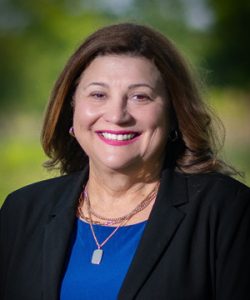 Paula Sollami Covello (D) is running for her fifth term as County Clerk, where she feels her experience as the first Executive Director of the NJ School Ethics Commissions, a Department of Education attorney and an Assistant County Counsel have benefited her. She is running to keep her position because she feels her experience matters as voting rights are under attack.
Paula Sollami Covello (D) is running for her fifth term as County Clerk, where she feels her experience as the first Executive Director of the NJ School Ethics Commissions, a Department of Education attorney and an Assistant County Counsel have benefited her. She is running to keep her position because she feels her experience matters as voting rights are under attack.
“There are many initiatives and policies that are limiting voter participation, and I believe this is the time in our history to fight to make sure that every voice is heard. Recent initiatives from Washington seek to restrict or limit voter participation by imposing REAL ID requirements on voters, requiring voters’ names to match their birth certificates and recent policies seek to eliminate vote-by-mail altogether. I would oppose any policy that restricts the ability to vote in our society. As a former leader of NJ’s County Clerks, I believe I am well qualified to continue to serve as Mercer County Clerk and fight against these suppression efforts.
Additionally, Sollami Covello says her accomplishments are a testament to what more she can do for the county.
“As County Clerk, I have expanded Mercer County’s vote by mail list to over 45,000 voters, one of the highest percentages in the State. I promised and delivered on our county’s purchase of a verified voting system, as we purchased voting machines with a paper trail for auditing purposes. I have also expanded outreach services for passports and Veteran IDs by opening a satellite office in Hamilton Township and bringing our passport service days to the various municipalities throughout Mercer County. Further, I have eliminated backlogs in property recording and implemented online property search systems. I have scanned back most property records in the County Clerk’s Office and plan to complete this project. Most importantly, I have educated the public in multiple languages about all of my Office’s services so that everyone can vote or learn about the availability of the many government services the Clerk’s Office offers.”
 Shaolin Brown (R) is running for her first term as County Clerk. She says her years as a community advocate, organizing town halls, supporting local small business and childcare providers and assisting law firms and nonprofits, have provided experience that will support her in this role.
Shaolin Brown (R) is running for her first term as County Clerk. She says her years as a community advocate, organizing town halls, supporting local small business and childcare providers and assisting law firms and nonprofits, have provided experience that will support her in this role.
“Through this work, I have gained hands-on experience with the challenges residents face and with the election process itself. My passion is building trust between government and the community, ensuring that Mercer County’s records, property deeds, and elections are secure, transparent, and accessible to all.”
Brown says restoring trust in the election process is the most urgent need.
“As County Clerk, I will ensure every election is run with transparency and full compliance with New Jersey’s Title 19 election laws. I will implement stronger chain-of-custody protocols, provide clear and accessible voter information, and record ballot draws on video for public review. These measures will help every voter know their ballot is counted accurately and their voice truly matters.”
MERCER COUNTY BOARD OF COMMISSIONERS
The legislative branch of county government, Mercer County Board of Commissioners, has four candidates vying for 2 open seats. Two incumbents are running to keep their seats against two newcomers. The part-time role is for a three-year term.
 Nina Melker (D) is running for her third full term as County Commissioner (she took over a vacated seat in 2018). She is grateful to bring her experience as a banker to help with county finances. What does Melker think is most urgent for Mercer County residents, should she serve a third term?
Nina Melker (D) is running for her third full term as County Commissioner (she took over a vacated seat in 2018). She is grateful to bring her experience as a banker to help with county finances. What does Melker think is most urgent for Mercer County residents, should she serve a third term?
“Working to maintain affordability for residents and ensuring we can continue to meet the needs of our most vulnerable populations throughout Mercer County,” she says.
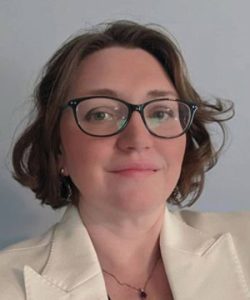 Cathleen Lewis (D) is running for her second term as County Commissioner, after serving 10 years on Lawrence Council (two as their mayor). She hopes to build on the momentum that has been underway with County Executive Dan Benson, focusing on services to residents. In a new term, Lewis hopes to continue county/municipal collaborations and invest in economic development.
Cathleen Lewis (D) is running for her second term as County Commissioner, after serving 10 years on Lawrence Council (two as their mayor). She hopes to build on the momentum that has been underway with County Executive Dan Benson, focusing on services to residents. In a new term, Lewis hopes to continue county/municipal collaborations and invest in economic development.
“Our work has begun with investment in compatible emergency response systems between our towns and the county, strengthening response while saving taxpayers money,” Lewis says, adding, “Through our new Division of Travel and Tourism we can effectively capitalize on the 250thanniversary of the birth of our nation, bringing in powerful economic dollars and building long-term investment in our local businesses.
Lewis also aims to develop clean transportation options and invest in safer roadways with accountability continuing as a primary concern for.
“This last year has brought open, collaborative conversations at our commissioner meetings. Not only do I want to see that continue, I think we can expand our efforts to ensure we are sharing information and ideas consistently.”
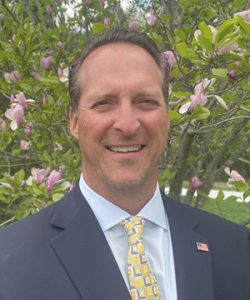 Daniel Hanley, Jr. (R) is running for his first term as County Commissioner. The son of an immigrant mother, he has immersed himself in his Mercer County community through roles including treasurer of the Hopewell Valley YMCA, treasurer for Hopewell Valley Lacrosse, and as treasurer for the Hopewell Valley High School Class of 2025 PTO. A Certified Financial Planner, Hanley hopes to help safeguard the county’s fiscal future using his experiences guiding people through an ever-changing economy. As a County Commissioner, Hanley is ready to jump right in to mitigate increasing property taxes, suggesting zero-based budgeting and non-property-tax revenue streams to offset the need.
Daniel Hanley, Jr. (R) is running for his first term as County Commissioner. The son of an immigrant mother, he has immersed himself in his Mercer County community through roles including treasurer of the Hopewell Valley YMCA, treasurer for Hopewell Valley Lacrosse, and as treasurer for the Hopewell Valley High School Class of 2025 PTO. A Certified Financial Planner, Hanley hopes to help safeguard the county’s fiscal future using his experiences guiding people through an ever-changing economy. As a County Commissioner, Hanley is ready to jump right in to mitigate increasing property taxes, suggesting zero-based budgeting and non-property-tax revenue streams to offset the need.
“New Jersey is already infamous for having some of the highest property tax rates in the nation, and as assessments and local, county, and school budgets continue to climb, this reality hits Mercer County households particularly hard,” Hanley explains. “The continuous rise in property taxes is more than just a line item on a budget; it is a fundamental quality-of-life issue. It forces long-time residents to consider leaving the community they helped build, making Mercer County less affordable and less diverse. Furthermore, it acts as a major deterrent to prospective new businesses and residents, ultimately harming our county’s economic competitiveness and growth.”
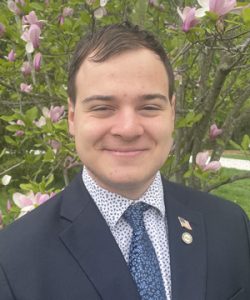 Alexander DiFalco (R) currently serves as Vice Chair of the Mercer County Young Republicans and works with Jersey First as a grassroots advocate while he completes his degree in history, law, and politics at The College of New Jersey. Hoping to represent the next generation of voters, DiFalco aims to bring his hands-on experience with campaigns at the local, county, and state levels to bring down Mercer County property taxes.
Alexander DiFalco (R) currently serves as Vice Chair of the Mercer County Young Republicans and works with Jersey First as a grassroots advocate while he completes his degree in history, law, and politics at The College of New Jersey. Hoping to represent the next generation of voters, DiFalco aims to bring his hands-on experience with campaigns at the local, county, and state levels to bring down Mercer County property taxes.
“In 2024, the Mercer County Board of Commissioners approved a sweeping tax increase that fell disproportionately on certain towns. Lawrence and Hopewell saw increases of 5 to 6 percent. Hamilton and Robbinsville faced increases of 12 to 15 percent. East Windsor and Ewing had crushing increases of 18 to 22 percent. Princeton saw an average increase of 12 percent from 2023 to 2024. Such steep and uneven increases place the heaviest burden on families least able to afford them, including many in Trenton, Ewing, Lawrence, and Hamilton. For young growing families and disadvantaged residents, these hikes are not just numbers on a bill; they threaten their ability to pay for housing, food, and utilities. Tax increases must always be reasonable, equitable, and justified.”
DiFalco suggests using part of the county’s annual budget surplus to provide immediate relief across Mercer County through a large-scale tax break.
There are two candidates vying for two open seats on Princeton Council, running for three-year terms on the six-member Council. Both are incumbents, running unopposed. There is no minimum vote required for them to win, but you can learn more here about who they are and what they stand for.
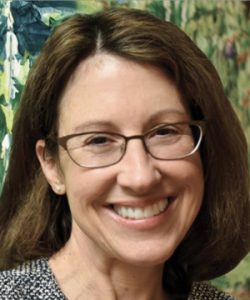 Mia Sacks (D) is running for her third term on Princeton Council and looks forward to building on the efforts she has made.
Mia Sacks (D) is running for her third term on Princeton Council and looks forward to building on the efforts she has made.
“Over the past two terms, I’ve worked hard to invest in our community’s future—protecting environmentally sensitive open spaces, strengthening local infrastructure, fostering smart growth, and making sure our public schools have the resources they need. As I seek a third term, I will work to build upon that progress: expanding housing opportunities to ensure that residents of all ages and income levels can remain in our community; and encouraging growth in a way that honors our town’s history while preparing us for the future. I will continue to advance resiliency and climate change mitigation initiatives to safeguard our environment and infrastructure. Just as importantly, I’m committed to streamlining municipal operations to deliver services more efficiently and cost-effectively—ensuring that every taxpayer dollar is used wisely as we plan for a sustainable, inclusive, and financially secure future.
In a time of increasing political polarization, the need for civil discourse and genuine dialogue is imperative. Our community thrives when we come together to listen, learn, and find common ground — even when we disagree. This commitment to civility is essential to preserving the unity of our town and the strength of our democracy.”
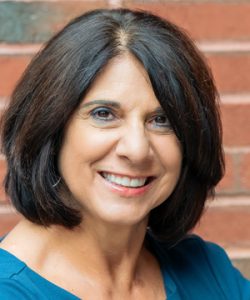 Michelle Pirone Lambros (D) is running for her third term on Princeton Council, where she hopes to continue focusing on economic development, affordability and sustainability. Pirone Lambros says that growing the commercial tax base helps to support nonprofit and cultural organizations while offsetting the residential tax burden.
Michelle Pirone Lambros (D) is running for her third term on Princeton Council, where she hopes to continue focusing on economic development, affordability and sustainability. Pirone Lambros says that growing the commercial tax base helps to support nonprofit and cultural organizations while offsetting the residential tax burden.
“We are committed to making our town welcoming to businesses of all sizes, aiming to retain the unique small businesses that define our community, while also attracting and supporting larger establishments that add vibrancy. My work with our special improvement district, Experience Princeton, is really just beginning as the foundation has been laid, and now the fruition of this will be realized over the next few years,” she details. Pirone Lambros is also proud of the work done on the Affordable Housing, Planning and Redevelopment committee to expand opportunities for housing development and will continue through the 4th round of affordable housing.
“To further our sustainability goals, we are looking to expand our municipal bus service, improving transportation for residents, visitors, students, and employees. Our efforts also include enhancing our bike and pedestrian infrastructure, implementing traffic calming measures, improving our streetscapes, and expanding parking facilities.”
PRINCETON PUBLIC SCHOOLS BOARD OF EDUCATION
There are three candidates vying for the three open seats on Princeton Public School’s Board of Education. Two incumbents and one repeat candidate are running uncontested, but your vote signals confidence to serve the three-year term. To know them a little better, each candidate shares why they are running and what their priority issue is for the new year.
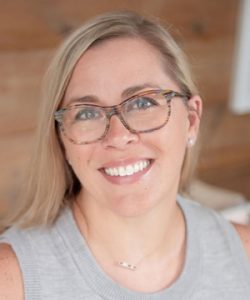 Erica Snyder is running for her second attempt to gain a seat on the Board of Education.
Erica Snyder is running for her second attempt to gain a seat on the Board of Education.
“Despite the initial setback, I’m more determined than ever to serve our community. I have another year under my belt as a parent in the district, including a full year at the middle school to help shape my perspective. I’ve also received overwhelming support from community members who share my vision for a better school district. This enthusiasm has reinforced my decision to run again.”
Snyder is still hoping to work towards closing educational gaps and improving district communication and is eager to get involved with supporting the new leader of PPS, Dr. Michael LaSusa.
“My top priority would be to ensure he has what he needs to make changes in the district that work to support all students receiving the best education in a safe learning environment.
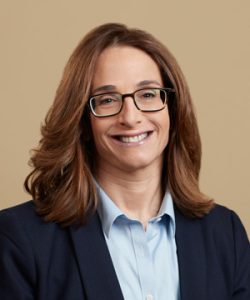
Dafna Kendal is the first Board of Education member to run for a fourth term. Feeling there is still important work to do, she looks forward to another three years.
“Efforts in curriculum, special education, and facilities, takes years to move from idea to reality, and I would like to see them through. I’m also running because stability is important. With a new superintendent, major facilities work, and state-level pressures on budgets, having experienced leadership on the Board helps provide continuity. At the same time, I see my role as supporting newer board members so that the district benefits from both experience and fresh perspectives.”
Kendal plans to continue keeping students top of mind.
“My top priority is working to ensure that every student has access to strong academic and support programs that meet their needs. That means strengthening course offerings, improving special education resources, and making thoughtful budget decisions that ensure that teaching and learning are always at the forefront.”
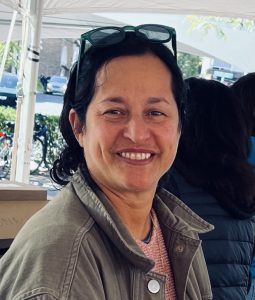 Susan Kanter is running for her third term on the Board of Education, looking forward to what it will bring.
Susan Kanter is running for her third term on the Board of Education, looking forward to what it will bring.
“In serving on the Board, students have always been and will continue to be my prime focus, both in terms of meeting educational expectations and their emotional needs. I especially look forward to supporting our new Superintendent in meeting these goals, and ensuring Princeton Public Schools can ensure all our students have the tools they need for success.”
In her next term, Kanter recognizes there will be both unique opportunities as well as challenges.
“I do not want to minimize the challenges this district will face as we navigate Princeton’s expected growth and other potential changes to our financial model. In my first two terms I served as co-chair of the Operations Committee, as well as a member and co-chair of the Long-Term Planning Committee. I hope to continue to use this experience to focus on both long-term and short-term financial planning, implementing referenda with fidelity, as well as supporting building maintenance and technology needs. I believe my experience and enthusiasm on these committees as well as my current postings on Policy and Student Achievement, and the year I have spent as Vice President of the Board, will allow me to effectively meet the demands our district will face in the coming years.”
RESULTS OF THE RACES
Unofficial results will begin coming out when polls close at 8pm on November 4th, though Mail-in Ballots will continue to be counted until November 10th. The official tally will be confirmed by Mercer County by November 25th, and by the state on December 4th.
On Election evening, voting machine results will be available here for anyone who wants to view them.
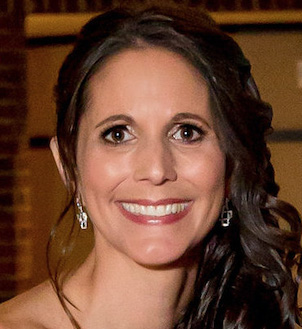
Lisa Jacknow spent years working in national and local news in and around New York City before moving to Princeton. Working as both a TV producer and news reporter, Lisa came to this area to focus on the local news of Mercer County at WZBN-TV. In recent years, she got immersed in the Princeton community by serving leadership roles at local schools in addition to volunteering for other local non-profits. In her free time, Lisa loves to spend time with her family, play tennis, sing and play the piano. A graduate of the S. I. Newhouse School of Public Communications at Syracuse University, Lisa was raised just north of Boston, Massachusetts but has lived in the tri-state area since college. She is excited to be Editor and head writer for Princeton Perspectives!
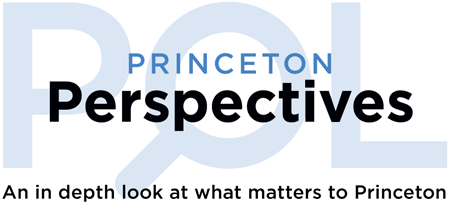

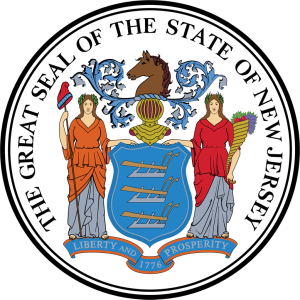 It is three weeks until election day, and the biggest race on the New Jersey ticket in years. Who will succeed Phil Murphy as the next governor of the Garden State?
It is three weeks until election day, and the biggest race on the New Jersey ticket in years. Who will succeed Phil Murphy as the next governor of the Garden State? Our current approach to affordable housing is broken. Of course, we need affordable living options in New Jersey, but mandated housing construction in every municipality has resulted in residential overdevelopment in communities that have limited infrastructure, no mass transit, and very few, if any, low-to-moderate income job opportunities.
The current model is also gobbling up open space, chasing wildlife from its habitat, increasing pollution from more idling cars on already congested roads, leading to more local flooding from stormwater management issues, and driving up property taxes due to endless legal fees and additional local services.
That's why I support a regional approach that would allow for more local input, with an approach focused on driving population growth to transit hubs and urban centers, where self-sustaining local economies are desperately needed - including regional contribution agreements (i.e., RCAs) and quotas based on state Department of Labor statistics. The extent to which PILOTS fit into that approach would be a matter for local stakeholders to determine in the best interest of their community. I believe that approach must come via a real legislative solution - not a judge - and, if need be, a constitutional amendment.
Local infrastructure issues, like Princeton faces, are why I support impact fees on new development to ensure that when infrastructure improvements are necessitated by the development, the developer pays for it, not already overburdened taxpayers.
Our current approach to affordable housing is broken. Of course, we need affordable living options in New Jersey, but mandated housing construction in every municipality has resulted in residential overdevelopment in communities that have limited infrastructure, no mass transit, and very few, if any, low-to-moderate income job opportunities.
The current model is also gobbling up open space, chasing wildlife from its habitat, increasing pollution from more idling cars on already congested roads, leading to more local flooding from stormwater management issues, and driving up property taxes due to endless legal fees and additional local services.
That's why I support a regional approach that would allow for more local input, with an approach focused on driving population growth to transit hubs and urban centers, where self-sustaining local economies are desperately needed - including regional contribution agreements (i.e., RCAs) and quotas based on state Department of Labor statistics. The extent to which PILOTS fit into that approach would be a matter for local stakeholders to determine in the best interest of their community. I believe that approach must come via a real legislative solution - not a judge - and, if need be, a constitutional amendment.
Local infrastructure issues, like Princeton faces, are why I support impact fees on new development to ensure that when infrastructure improvements are necessitated by the development, the developer pays for it, not already overburdened taxpayers.  I support affordable housing, but I do not support state mandates, such as the PILOT agreement to negotiate with developers to build affordable housing. I do not support using tax dollars to achieve affordable housing. I just want people to have access to affordable housing, without having the taxpayers foot the bill. I support the building of smaller houses with no impact fees (taxes on smaller houses). I support working with the local governments to change the zoning laws to allow tiny homes and RVs, so that people can have affordable housing. I do believe that the presence of affordable housing would reduce the number of people leaving New Jersey, as well as homelessness. Abandoned residential and commercial buildings could be used to house the homeless.
I support affordable housing, but I do not support state mandates, such as the PILOT agreement to negotiate with developers to build affordable housing. I do not support using tax dollars to achieve affordable housing. I just want people to have access to affordable housing, without having the taxpayers foot the bill. I support the building of smaller houses with no impact fees (taxes on smaller houses). I support working with the local governments to change the zoning laws to allow tiny homes and RVs, so that people can have affordable housing. I do believe that the presence of affordable housing would reduce the number of people leaving New Jersey, as well as homelessness. Abandoned residential and commercial buildings could be used to house the homeless.  The SWP campaign is not centered on a better set of proposals for how to reform capitalism it is to change which class rules. No agreements including the PILOT agreement, other laws, or policies under the capitalist profit system can solve the housing crisis and homelessness. High rents and housing shortages are no accident. Landlords put a premium on building luxury apartments — which rake in more profits — rather than affordable decent housing that workers need. Only through the struggle to end the profit system can that be changed. Workers need to fight for higher wages and a massive government-funded public works program to build affordable housing and provide jobs for those who need them. Cost-of-living adjustments in all wage, pensions and benefit contracts so that workers are protected from rising prices.
The SWP campaign is not centered on a better set of proposals for how to reform capitalism it is to change which class rules. No agreements including the PILOT agreement, other laws, or policies under the capitalist profit system can solve the housing crisis and homelessness. High rents and housing shortages are no accident. Landlords put a premium on building luxury apartments — which rake in more profits — rather than affordable decent housing that workers need. Only through the struggle to end the profit system can that be changed. Workers need to fight for higher wages and a massive government-funded public works program to build affordable housing and provide jobs for those who need them. Cost-of-living adjustments in all wage, pensions and benefit contracts so that workers are protected from rising prices.  I am committed to lowering housing costs and working with our towns to expand housing opportunities that families, seniors, veterans, and young people can actually afford. PILOTs are an important tool for towns to meet the specific needs of their communities and to help their residents afford a home there. As governor, I will work collaboratively with municipalities to help lower housing costs by crafting further incentives and tools for towns to employ and making resources available to support municipal housing programs and projects.
As governor, I will expand existing first-generation and first-time homebuyer programs to cover a larger share of homebuyers’ down payments, which will expand access to homeownership and generational wealth to more families. Making housing more affordable in our state also includes working to expand access to starter homes and accessory dwelling units that are less expensive for families and address the “missing middle.” I will work collaboratively with local governments that seek to redevelop underused and neglected properties, and to create transit-oriented development, which will expand access to affordable housing options and generate local property tax revenues.
State government also needs to improve coordination and consistency across all state departments to streamline the state permitting process for housing. This will reduce construction delays and homebuilding costs, which will lower the cost of homes for working families.
I also will work with municipalities to identify ways that we can fairly and effectively address infrastructure impacts from new housing construction, such as sewer and water systems and roadways, which create additional local burdens.
I’ll crack down on predatory investors, negligent landlords, and deceptive lenders who illegally jack up prices, collude to rig rents above market levels, don’t take care of their buildings, and discriminate in the home mortgage and rental markets.
A critical way for the state to support more housing options that are affordable for families is by ending diversions from the Affordable Housing Trust Fund. This fund helps municipalities expand housing options that are affordable for families and lower costs in a way that works for their community, but the state largely uses it for other purposes right now. I’m committed to ending these diversions as governor.
I will also work with municipalities to make sure our families have access to a world-class education at the same time as they can afford to put a roof over their heads — families should not be forced to pick between the two. Central to this commitment is fully funding our schools at the state level. As governor, I will fully fund, stabilize, and modernize our school funding formula so our kids have access to programs that we know work, like high-impact tutoring and mental health services.
I am committed to lowering housing costs and working with our towns to expand housing opportunities that families, seniors, veterans, and young people can actually afford. PILOTs are an important tool for towns to meet the specific needs of their communities and to help their residents afford a home there. As governor, I will work collaboratively with municipalities to help lower housing costs by crafting further incentives and tools for towns to employ and making resources available to support municipal housing programs and projects.
As governor, I will expand existing first-generation and first-time homebuyer programs to cover a larger share of homebuyers’ down payments, which will expand access to homeownership and generational wealth to more families. Making housing more affordable in our state also includes working to expand access to starter homes and accessory dwelling units that are less expensive for families and address the “missing middle.” I will work collaboratively with local governments that seek to redevelop underused and neglected properties, and to create transit-oriented development, which will expand access to affordable housing options and generate local property tax revenues.
State government also needs to improve coordination and consistency across all state departments to streamline the state permitting process for housing. This will reduce construction delays and homebuilding costs, which will lower the cost of homes for working families.
I also will work with municipalities to identify ways that we can fairly and effectively address infrastructure impacts from new housing construction, such as sewer and water systems and roadways, which create additional local burdens.
I’ll crack down on predatory investors, negligent landlords, and deceptive lenders who illegally jack up prices, collude to rig rents above market levels, don’t take care of their buildings, and discriminate in the home mortgage and rental markets.
A critical way for the state to support more housing options that are affordable for families is by ending diversions from the Affordable Housing Trust Fund. This fund helps municipalities expand housing options that are affordable for families and lower costs in a way that works for their community, but the state largely uses it for other purposes right now. I’m committed to ending these diversions as governor.
I will also work with municipalities to make sure our families have access to a world-class education at the same time as they can afford to put a roof over their heads — families should not be forced to pick between the two. Central to this commitment is fully funding our schools at the state level. As governor, I will fully fund, stabilize, and modernize our school funding formula so our kids have access to programs that we know work, like high-impact tutoring and mental health services. 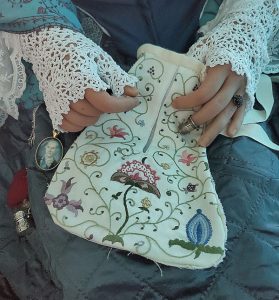 Perhaps it is a story being told by the docent as you make your way through the halls; videos strategically placed throughout that bring different displays to life; or maybe it’s the pieces alone that connect with you. Everyone engages with museums differently, but all have the ability to take you back, pull you in and open your mind.
Perhaps it is a story being told by the docent as you make your way through the halls; videos strategically placed throughout that bring different displays to life; or maybe it’s the pieces alone that connect with you. Everyone engages with museums differently, but all have the ability to take you back, pull you in and open your mind.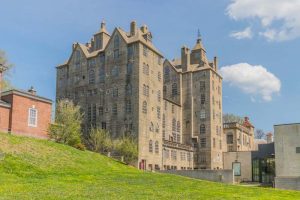
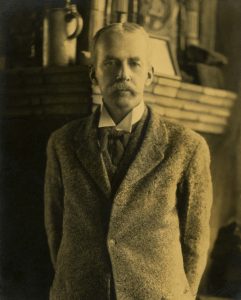 Mercer (of no relation and not to be confused with General Hugh Mercer, the namesake for Mercer County, NJ) was ahead of his time. Most well known as a tile designer, he was also an historian, amateur architect, collector and curator. Whereas many people keep things in our homes that one day could be perceived as precious or unique, Mercer took collections and his talents one step further. He built himself a castle-style home, Fonthill Castle, and nearby decided to then build Mercer Museum, also inspired by castle architecture. In it, he stored a collection of almost 30,000 objects; most that were still being used in his day but which he saw as becoming either obsolete or an important mark of their time. It includes everyday items like spoons or bicycles as well as pre-industrial items such as a hand-pumped fire engine.
Mercer (of no relation and not to be confused with General Hugh Mercer, the namesake for Mercer County, NJ) was ahead of his time. Most well known as a tile designer, he was also an historian, amateur architect, collector and curator. Whereas many people keep things in our homes that one day could be perceived as precious or unique, Mercer took collections and his talents one step further. He built himself a castle-style home, Fonthill Castle, and nearby decided to then build Mercer Museum, also inspired by castle architecture. In it, he stored a collection of almost 30,000 objects; most that were still being used in his day but which he saw as becoming either obsolete or an important mark of their time. It includes everyday items like spoons or bicycles as well as pre-industrial items such as a hand-pumped fire engine. Mercer himself was not just a quiet collector. He was part of the arts and crafts movement and the designer of such notables as the tile floor mosaic installation in the Capitol building in Harrisburg, PA today. Featured in magazines about cement or the arts & crafts movement, Mercer not only traveled to collect oral histories but was known to research and find local histories as well.
Mercer himself was not just a quiet collector. He was part of the arts and crafts movement and the designer of such notables as the tile floor mosaic installation in the Capitol building in Harrisburg, PA today. Featured in magazines about cement or the arts & crafts movement, Mercer not only traveled to collect oral histories but was known to research and find local histories as well.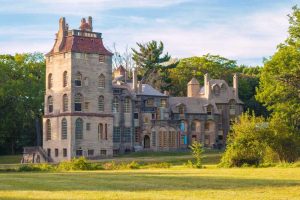
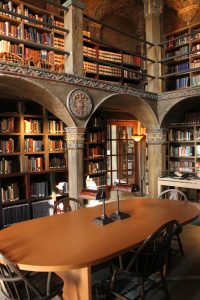
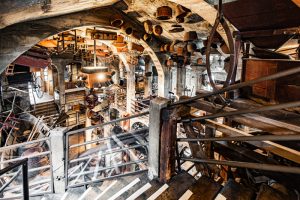
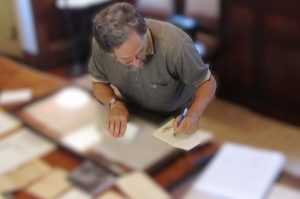 Jeff Marshall is a Bucks County local and former President of
Jeff Marshall is a Bucks County local and former President of 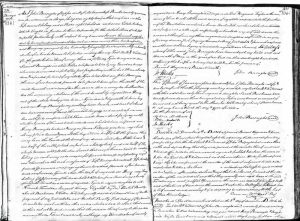 “One thing I found was in the will of John Burroughs giving his one son Samuel one silver dollar ‘because by his imprudent conduct he caused his father to spend more money than his share of the property would amount to’. That got me digging and I found out that Samuel was a Tory and a horse thief who was vilified by the Revolutionary leaders of Bucks County and his father got him off relatively unscathed. Deeper research showed that he obtained a character reference from a Virginia officer who had apparently spent time in the family’s house around the time of Washington’s Crossing and is one of the only references to where troops beyond the generals were encamped.”
“One thing I found was in the will of John Burroughs giving his one son Samuel one silver dollar ‘because by his imprudent conduct he caused his father to spend more money than his share of the property would amount to’. That got me digging and I found out that Samuel was a Tory and a horse thief who was vilified by the Revolutionary leaders of Bucks County and his father got him off relatively unscathed. Deeper research showed that he obtained a character reference from a Virginia officer who had apparently spent time in the family’s house around the time of Washington’s Crossing and is one of the only references to where troops beyond the generals were encamped.”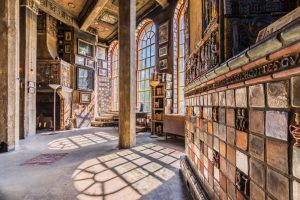
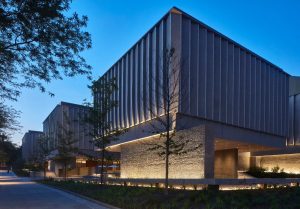

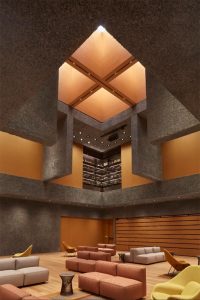
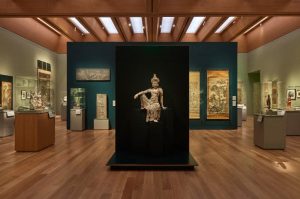
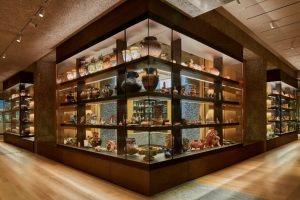
 While some are wishing there were many more weeks of summer, others are looking forward to getting the kids back to school and on with the regular routine. Though it officially lasts until September 21st on the calendar, summer unofficially ends for many with Labor Day and a new school year. Administrations have been working through the months to get everything in order. Now, as staff and students are gearing up to head back, we’ve got the scoop.
While some are wishing there were many more weeks of summer, others are looking forward to getting the kids back to school and on with the regular routine. Though it officially lasts until September 21st on the calendar, summer unofficially ends for many with Labor Day and a new school year. Administrations have been working through the months to get everything in order. Now, as staff and students are gearing up to head back, we’ve got the scoop. Princeton Public Schools is home to nearly 4,000 students, and with six schools across the municipality, it can be difficult to do major renovation projects while school is in session. That is why it takes advantage of the summer months to make progress. And Summer 2025 was full of it!
Princeton Public Schools is home to nearly 4,000 students, and with six schools across the municipality, it can be difficult to do major renovation projects while school is in session. That is why it takes advantage of the summer months to make progress. And Summer 2025 was full of it!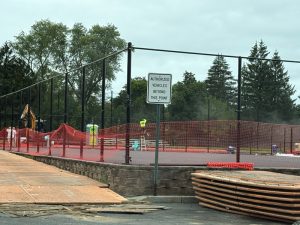 Two years ago, the community supported a referendum vote that included improvements to some Princeton High School sporting facilities. This summer, the contractor started with demolition at the tennis courts and drainage basin. They removed much of the vegetation from the basin to access the retaining wall. At the tennis courts, the existing base was removed and prepped making way for installation of a new court surface. The courts are expected to be fully usable by September 22nd.
Two years ago, the community supported a referendum vote that included improvements to some Princeton High School sporting facilities. This summer, the contractor started with demolition at the tennis courts and drainage basin. They removed much of the vegetation from the basin to access the retaining wall. At the tennis courts, the existing base was removed and prepped making way for installation of a new court surface. The courts are expected to be fully usable by September 22nd.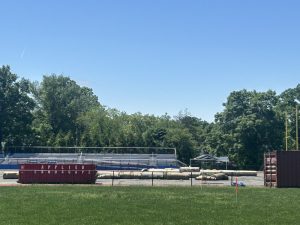 Next door, everyone is excited for the new turf field. The old ball stop netting, gates, athletic events and carpeting were removed from this multi-use area to allow for improvements and upgrades. Footings were installed to support the new ball stop netting system. Additionally, new storm drainage, curbing and pavement were installed at the D zone. On the field, fine grading took place and new events were installed. The shot-put event concrete was laid and new carpet delivered for placement across the field. There is still a bit more work to be done, such as track surface line painting. By Homecoming, in early October, all should be completed.
Next door, everyone is excited for the new turf field. The old ball stop netting, gates, athletic events and carpeting were removed from this multi-use area to allow for improvements and upgrades. Footings were installed to support the new ball stop netting system. Additionally, new storm drainage, curbing and pavement were installed at the D zone. On the field, fine grading took place and new events were installed. The shot-put event concrete was laid and new carpet delivered for placement across the field. There is still a bit more work to be done, such as track surface line painting. By Homecoming, in early October, all should be completed.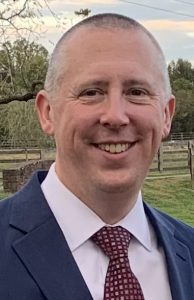 Who is overseeing all this summer’s work? With the departure of Matt Bouldin, PPS’ new Business Administrator and Board Secretary Andrew Harris joined the district on July 1st. Coming from South Hunterdon Regional School District, he has experience with many large construction projects that will be very useful as these, and other referendum projects, move forward.
Who is overseeing all this summer’s work? With the departure of Matt Bouldin, PPS’ new Business Administrator and Board Secretary Andrew Harris joined the district on July 1st. Coming from South Hunterdon Regional School District, he has experience with many large construction projects that will be very useful as these, and other referendum projects, move forward. PPS also had its most senior staffing change take place with the July 1st start of new Superintendent Michael La Susa. La Susa replaces Kathie Foster, who served as Interim Superintendent following the resignation of Carol Kelly in November 2023. He was superintendent of the Chathams for 13 years, and La Susa also previously taught social studies and Spanish. Some of his actions as Superintendent there mirror some efforts that took place at PPS in recent years, including a focus on mental health and a later start time at the high school. He also created a mandatory Holocaust and Genocide Studies course at Chatham Middle School, which he is hoping to bring to Princeton.
PPS also had its most senior staffing change take place with the July 1st start of new Superintendent Michael La Susa. La Susa replaces Kathie Foster, who served as Interim Superintendent following the resignation of Carol Kelly in November 2023. He was superintendent of the Chathams for 13 years, and La Susa also previously taught social studies and Spanish. Some of his actions as Superintendent there mirror some efforts that took place at PPS in recent years, including a focus on mental health and a later start time at the high school. He also created a mandatory Holocaust and Genocide Studies course at Chatham Middle School, which he is hoping to bring to Princeton.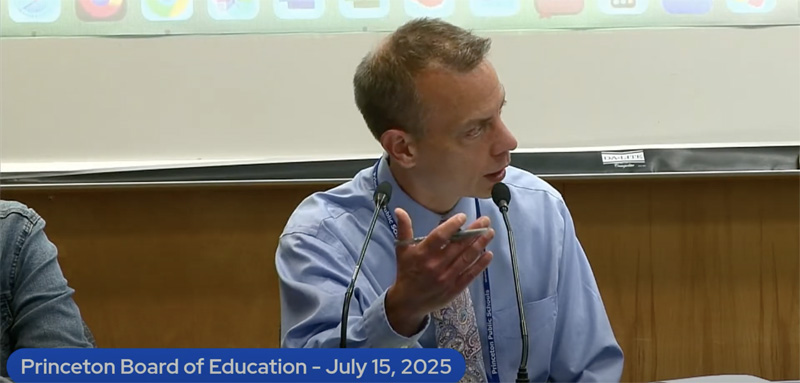 To get to know the greater community, PPS posted various locations and hours throughout July and early August where La Susa made himself available for people to come say hello. He also attended public and private events, of which one really made an impact.
To get to know the greater community, PPS posted various locations and hours throughout July and early August where La Susa made himself available for people to come say hello. He also attended public and private events, of which one really made an impact. While many people were enjoying the summer months off, schools around the Princeton area were in high gear getting ready for September 2025. From administrative changes to curriculum adjustments and physical construction, Princeton area independent and charter schools are excited to share what will be different as they welcome students and staff back to campus this fall.
While many people were enjoying the summer months off, schools around the Princeton area were in high gear getting ready for September 2025. From administrative changes to curriculum adjustments and physical construction, Princeton area independent and charter schools are excited to share what will be different as they welcome students and staff back to campus this fall.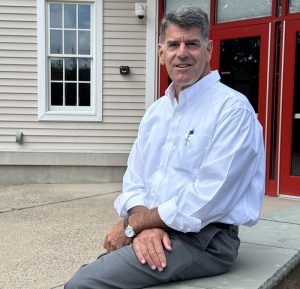 Chapin said good-bye to Barbara Pasteris after 36 years at the school, opening the door to welcome Steve Bristol as its Interim Head of School. After 13 years at the nearby Hun School of Princeton, Bristol joins the school community from where his children graduated in 2013 and 2016.
Chapin said good-bye to Barbara Pasteris after 36 years at the school, opening the door to welcome Steve Bristol as its Interim Head of School. After 13 years at the nearby Hun School of Princeton, Bristol joins the school community from where his children graduated in 2013 and 2016. Peter Gaines has joined Princeton Friends as its Head of School after decades of experience at independent schools and in Quaker education. Coming from Tandem Friends School in Charlotteville, Virginia, where Gaines helped grow their enrollment by nearly 50% and was instrumental in securing significant philanthropic support. Princeton Friends is also looking forward to its new half-day and full-day preschool class for children ages 3-5. With outdoor-oriented education and a variety of special classes, the children will be amongst those enjoying the new lower school playground on campus.
Peter Gaines has joined Princeton Friends as its Head of School after decades of experience at independent schools and in Quaker education. Coming from Tandem Friends School in Charlotteville, Virginia, where Gaines helped grow their enrollment by nearly 50% and was instrumental in securing significant philanthropic support. Princeton Friends is also looking forward to its new half-day and full-day preschool class for children ages 3-5. With outdoor-oriented education and a variety of special classes, the children will be amongst those enjoying the new lower school playground on campus.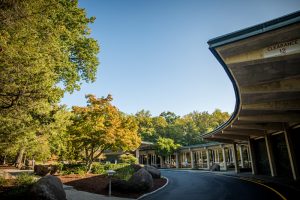 Elsewhere there are some additional leadership changes that hope to positively impact students as well.
Elsewhere there are some additional leadership changes that hope to positively impact students as well.  If you live nearby
If you live nearby 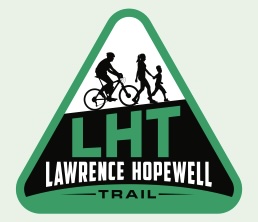 At
At 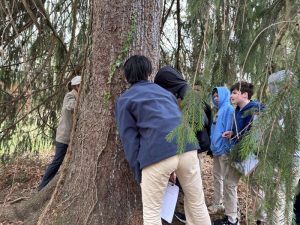 Also taking advantage of the outdoors and nearly 200 acres of forest and wetlands surrounding its school,
Also taking advantage of the outdoors and nearly 200 acres of forest and wetlands surrounding its school, 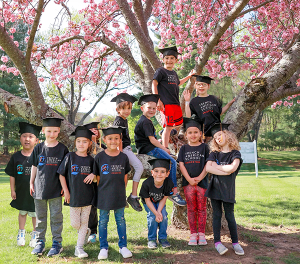 As
As 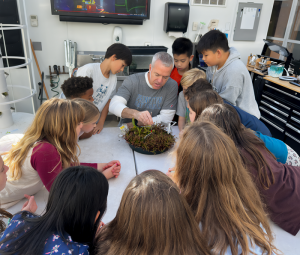 After taking the time to listen and further evaluate its community’s needs,
After taking the time to listen and further evaluate its community’s needs, 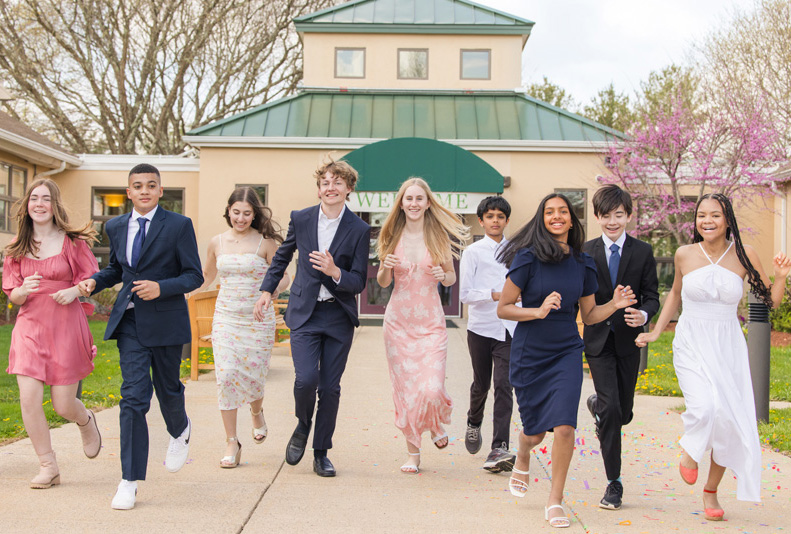
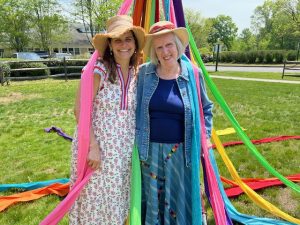 As it starts its 42nd year,
As it starts its 42nd year,